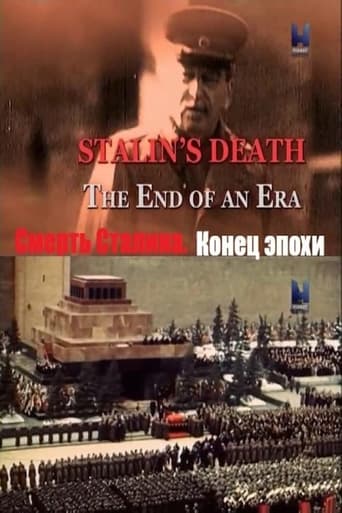Stalin’s Death - The End of An Era
Moscow, March 5th 1953. Stalin is dead. One day later, he is lying in state in an open coffin. Over one and a half million people move through the streets of Moscow. A last farewell for the man they worship like a god. Eyes full of tears. For three days they mourn in deep grief the loss of their "Leader" - their "Father", the "Greatest Man of our Time". During five minutes of silence throughout the East Bloc time seems to stop, as the coffin is laid to rest in the Mausoleum at the Red Square. They can't believe that he has left them. How can we go on without Stalin? What will become of us? The sudden death of Stalin creates a gigantic vacuum. The documentary takes a in-depth look at the story of a dramatic historical impact in the middle of the 20th Century. It tells about the tremor, the fear and the hope of the people. The contrariness appears as much as the bizarre and the absurd. 1953 strongly changed the history of the Soviet Union and the Eastern Bloc. Moscow, March 5th 1953. Stalin is dead. One day later, he is lying in state in an open coffin. Over one and a half million people move through the streets of Moscow. A last farewell for the man they worship like a god. Eyes full of tears. For three days they mourn in deep grief the loss of their "Leader" - their "Father", the "Greatest Man of our Time". During five minutes of silence throughout the East Bloc time seems to stop, as the coffin is laid to rest in the Mausoleum at the Red Square. They can't believe that he has left them. How can we go on without Stalin? What will become of us? The sudden death of Stalin creates a gigantic vacuum. The documentary takes a in-depth look at the story of a dramatic historical impact in the middle of the 20th Century. It tells about the tremor, the fear and the hope of the people. The contrariness appears as much as the bizarre and the absurd. 1953 strongly changed the history of the Soviet Union and the Eastern Bloc. Moscow, March 5th 1953. Stalin is dead. One day later, he is lying in state in an open coffin. Over one and a half million people move through the streets of Moscow. A last farewell for the man they worship like a god. Eyes full of tears. For three days they mourn in deep grief the loss of their "Leader" - their "Father", the "Greatest Man of our Time". During five minutes of silence throughout the East Bloc time seems to stop, as the coffin is laid to rest in the Mausoleum at the Red Square. They can't believe that he has left them. How can we go on without Stalin? What will become of us? The sudden death of Stalin creates a gigantic vacuum. The documentary takes a in-depth look at the story of a dramatic historical impact in the middle of the 20th Century. It tells about the tremor, the fear and the hope of the people. The contrariness appears as much as the bizarre and the absurd. 1953 strongly changed the history of the Soviet Union and the Eastern Bloc. Moscow, March 5th 1953. Stalin is dead. One day later, he is lying in state in an open coffin. Over one and a half million people move through the streets of Moscow. A last farewell for the man they worship like a god. Eyes full of tears. For three days they mourn in deep grief the loss of their "Leader" - their "Father", the "Greatest Man of our Time". During five minutes of silence throughout the East Bloc time seems to stop, as the coffin is laid to rest in the Mausoleum at the Red Square. They can't believe that he has left them. How can we go on without Stalin? What will become of us? The sudden death of Stalin creates a gigantic vacuum. The documentary takes a in-depth look at the story of a dramatic historical impact in the middle of the 20th Century. It tells about the tremor, the fear and the hope of the people. The contrariness appears as much as the bizarre and the absurd. 1953 strongly changed the history of the Soviet Union and the Eastern Bloc.



 AD
AD